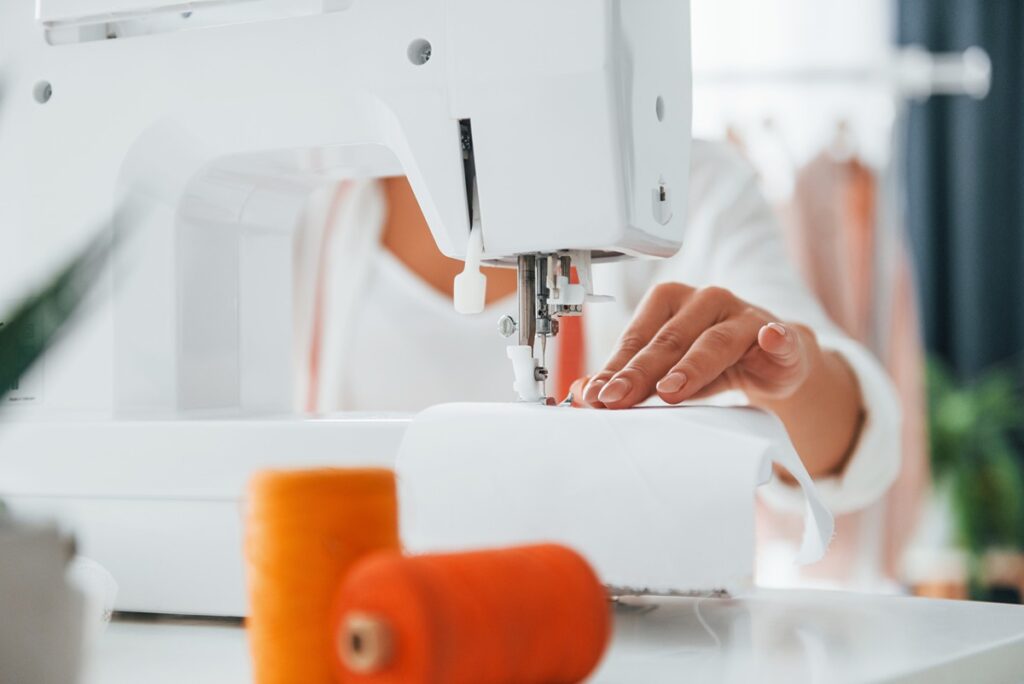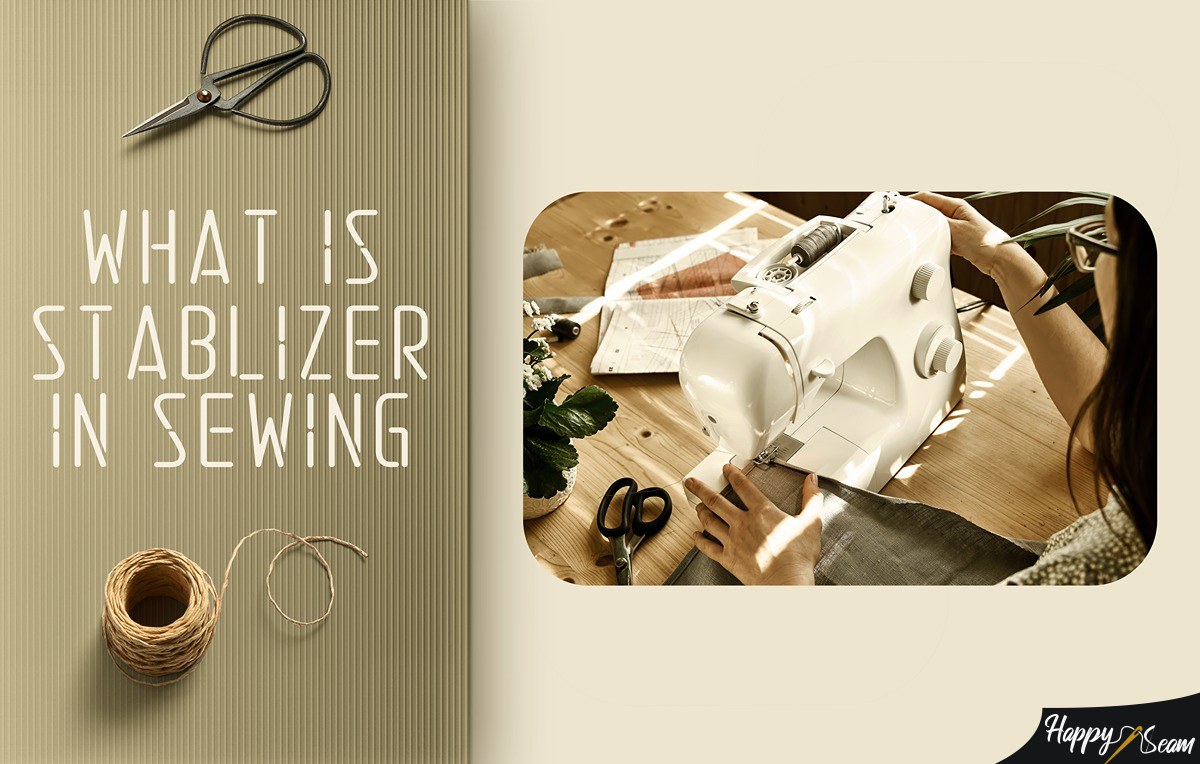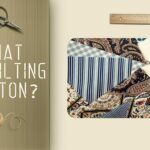Experienced individuals in sewing are very familiar with the importance of using a stabilizer. The usage of this practical notion leads to making the process of sewing very simple and easy for completing certain projects that you are passionate about.
Investing in an addition such as a stabilizer in sewing allows the maximization of usefulness when it comes to your fabrics and sewing machine.
Key Takeaways
- Stabilizers in sewing are often used for offering a sense of ease when it comes to completing your projects.
- The usage of stabilizers allows you to take control and easily handle your fabrics during the process of sewing.
- Sewing and embellishing are easier by using a notion such as a stabilizer.
- There are various different kinds of stabilizers that exist for reaching different goals in sewing.
- The careful and gentle use of stabilizers will ensure the best possible outcome for your sewing project.
What is a Stabilizer in Sewing?

A stabilizer in sewing is an addition that is put on fabrics to provide more control in regard to creating projects. In order to achieve an easier tackling of fabrics you are working with, the use of a stabilizer is often recommended.
Also Read: How To Store Yarn Properly
Different Types of Stabilizers used in Sewing
Cut-away Stabilizers
The world of sewing is very familiar with a certain type of stabilizer that is used to do away with unnecessary threads and fabric pieces in the process of completing a certain project.
These stabilizers provide necessary assistance during the process of sewing while at the same time getting rid of dangling pieces that you do not need. This type of stabilizer makes the process of sewing much easier and less frustrating.
Regardless of how many times your fabric is washed after completing the project, the stabilizer makes sure that the quality of the piece does not decrease and also puts an end to unnecessary pieces of fabric or threads.
The H.B.I. Company has manufactured one of the best cutaway stabilizers on the market called Cut Away Embroidery Stabilizer.
Tear-away Stabilizers
A stabilizer that is recommended to be used for projects that involve the use of naturally produced fabrics is one that prevents the fabric from tearing.
This stabilizer will not cause tearing on the fabric after it has been removed when the project is finished. It is completely safe to use and also, it protects the fabric from getting unnecessary damage in terms of shredding or pulling apart.
In addition, this stabilizer has been put forward as suitable to use for projects that involve quilting or embellishing because of its durable characteristics.
One of the best tear-away stabilizers that exist is the Madeira Cotton Soft Tear Away Machine Embroidery Stabilizer.
Wash-away Stabilizers
A stabilizer that does not require the need of using physical force to remove it, is one that can be washed by simply running it through the water.
This practical and easy-to-use stabilizer is often utilized when projects involving thin and delicate materials are included in the process of sewing. These types of materials are hard to properly cut and mark, which is why this stabilizer is frequently used.
When the process of embellishment is used in the sewing project, this type of stabilizer does not leave any residue that can be visible to the naked eye.
A recommended wash-away stabilizer has been manufactured by the brand World Weidner advertised as “Wash-Away – Water Soluble Embroidery Stabilizer & Topping”
Purposes of Using a Stabilizer in Sewing
Oftentimes, it is hard to manage fabrics and get control over your sewing. For this reason, the usage of stabilizers in sewing is implemented and used by many people.
Using a stabilizer often means providing support in the process of sewing as well as enabling the individuals to easily handle the flexibility of certain fabrics.
The process of embellishment in sewing often requires using a stabilizer because of the complexity that is involved in completing the project and the ease that is provided by including these types of additions.
Tips on Using a Stabilizer in Sewing
Not being familiar with and used to the proper usage of stabilizers in sewing can cause various different problems. Due to this, there are several tips that have been deduced in order to make your sewing process easier:
- Using a heavy hand when you are trying to utilize a particular stabilizer can cause the threads and the fabric to get damaged. Instead, gently pressing the stabilizer on the fabric is much more effective and safe for achieving success in regard to your sewing project.
- Certain types of fabrics are not compatible when they are combined with all possible kinds of threads regardless of which stabilizer you choose to use. It is important to check the compatibility of your notions before using a certain kind of stabilizer.
- Clearly sort out the different types of stabilizers in your possession because some of them may look very similar at first glance and it can lead to miscalculation.
Frequently Asked Questions
Do you need a fabric stabilizer?
The usage of stabilizers in sewing fabrics is not necessarily essential. However, they can make the process of sewing less frustrating and more enjoyable.
How many layers of stabilizer do I need?
The amount of stabilizers you choose to use depends on the severity of your project. Sometimes, it may require you to use several layers of stabilizer in sewing.
When should I use a stabilizer in sewing?
Every time you come across a project that needs extra support and help in the process of sewing is when you can use a stabilizer. The usage of a stabilizer is not limited to how many times it can be used, it all depends on your sewing needs.
Also Read: Great Tips for Organizing Sewing Supplies
Final Words
Knowing that there are notions that can make the creation of projects easier is comforting for many people who enjoy sewing.
One of these additions is the usage of a stabilizer which is known to help the easy flow of the process and also provide additional support for the particular user.
It is always recommended to be informed about the different possibilities that exist in order to make a sewing project less complicated and more pleasant.
I have been in the embroidery field for over 10 years. My career first started when I was an apprentice to a local seamstress where I started to learn the basics of garment construction and alterations. That’s where I started to love sewing and began to hone my skills even more.



